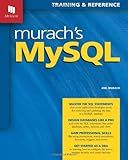Best MySQL Index Tools to Buy in December 2025

MySQL Cookbook: Solutions for Database Developers and Administrators



Murach's MySQL
- MASTER ESSENTIAL SQL STATEMENTS FOR MYSQL DATABASE CREATION.
- STEP-BY-STEP GUIDANCE FOR CODING AND DATABASE MANAGEMENT.
- IDEAL FOR BEGINNERS EAGER TO ENHANCE DATA SKILLS EFFICIENTLY.


To create an index in MySQL, you can use the CREATE INDEX statement followed by the name of the index, the table name, and the column(s) on which you want to create the index. For example, the syntax for creating a simple index on a single column would be:
CREATE INDEX index_name ON table_name (column_name);
You can also create a unique index by using the UNIQUE keyword:
CREATE UNIQUE INDEX index_name ON table_name (column_name);
Additionally, you can create a composite index on multiple columns by specifying them within parentheses:
CREATE INDEX index_name ON table_name (column_name1, column_name2);
Indexes can help improve the performance of queries by allowing MySQL to quickly locate rows within a table. It's important to carefully consider the columns you choose to index and to avoid creating unnecessary indexes, as they can impact the performance of write operations on the table.
What is the effect of index length on index creation in MySQL?
The length of an index in MySQL refers to the number of characters within a column that are indexed. The effect of index length on index creation in MySQL can impact the performance of database queries.
- Shorter index length: Having a shorter index length can improve the performance of index creation as it requires less memory and storage space. However, a shorter index length may result in more duplicate values being indexed, which can lead to decreased query performance.
- Longer index length: A longer index length can reduce the number of duplicate values being indexed, which can improve query performance. However, creating an index with a longer length can increase the amount of memory and storage space required, as well as the time it takes to create the index.
Overall, the appropriate index length will depend on the specific requirements of the database and the queries being executed. It is important to consider the trade-offs between index length, memory usage, and query performance when creating indexes in MySQL.
How to create a unique index in MySQL?
To create a unique index in MySQL, you can use the following syntax:
CREATE UNIQUE INDEX index_name ON table_name (column1, column2, ...);
In this syntax:
- index_name is the name of the unique index that you want to create.
- table_name is the name of the table on which you want to create the unique index.
- (column1, column2, ...) specifies the columns that you want to include in the unique index.
For example, if you want to create a unique index on the "email" column of a table named "users", you can use the following SQL query:
CREATE UNIQUE INDEX email_index ON users (email);
This will create a unique index on the "email" column of the "users" table, ensuring that each value in the "email" column is unique within the table.
How to create an index on a foreign key in MySQL?
To create an index on a foreign key in MySQL, you can use the following syntax:
ALTER TABLE child_table ADD INDEX fk_column_name_index (fk_column_name);
In this syntax:
- child_table is the name of the child table that contains the foreign key.
- fk_column_name_index is the name of the index that you want to create on the foreign key column.
- fk_column_name is the name of the foreign key column for which you want to create the index.
By creating an index on the foreign key column, you can improve the performance of queries that involve joining the child table with the parent table.
How to drop an index in MySQL?
To drop an index in MySQL, you can use the following syntax:
DROP INDEX index_name ON table_name;
Replace index_name with the name of the index you want to drop and table_name with the name of the table where the index is defined.
For example, if you want to drop an index named idx_email from a table named users, you would use the following SQL statement:
DROP INDEX idx_email ON users;
Make sure you have the necessary permissions to drop indexes on the table.
What is the maximum number of indexes that can be created on a table in MySQL?
In MySQL, there is a limit of 64 indexes per table.
